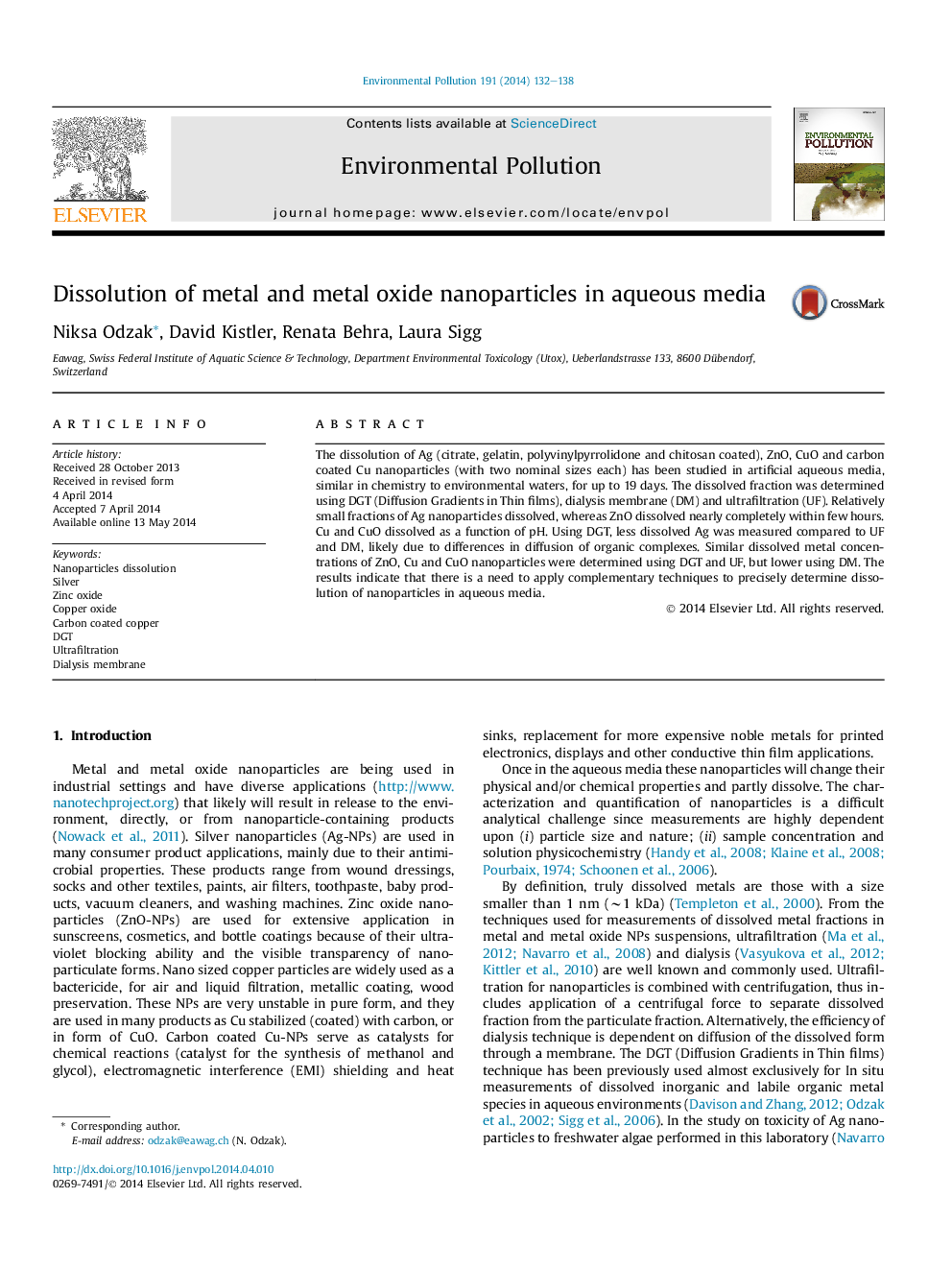| Article ID | Journal | Published Year | Pages | File Type |
|---|---|---|---|---|
| 4424436 | Environmental Pollution | 2014 | 7 Pages |
•Three different techniques used simultaneously to measure NPs dissolution.•ZnO-NPs are the most soluble, followed by CuO-NPs, carbon coated Cu-NPs and Ag-NPs.•Dissolution is an important process affecting the fate of nanoparticles.•Complementary techniques are needed to precisely determine dissolution of NPs.
The dissolution of Ag (citrate, gelatin, polyvinylpyrrolidone and chitosan coated), ZnO, CuO and carbon coated Cu nanoparticles (with two nominal sizes each) has been studied in artificial aqueous media, similar in chemistry to environmental waters, for up to 19 days. The dissolved fraction was determined using DGT (Diffusion Gradients in Thin films), dialysis membrane (DM) and ultrafiltration (UF). Relatively small fractions of Ag nanoparticles dissolved, whereas ZnO dissolved nearly completely within few hours. Cu and CuO dissolved as a function of pH. Using DGT, less dissolved Ag was measured compared to UF and DM, likely due to differences in diffusion of organic complexes. Similar dissolved metal concentrations of ZnO, Cu and CuO nanoparticles were determined using DGT and UF, but lower using DM. The results indicate that there is a need to apply complementary techniques to precisely determine dissolution of nanoparticles in aqueous media.
Graphical abstractFigure optionsDownload full-size imageDownload as PowerPoint slide
